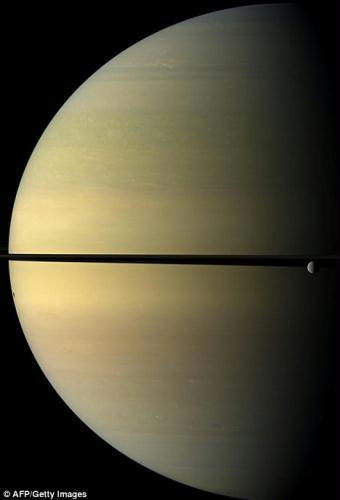Saturn as you rarely see it: Cassini mission captures planet in its natural colours with little sign of the spectacular rings
2009-12-30 11:21 BJT
Famed for it's spectacular ring system, this stately, natural-colour image has captured Saturn as you rarely see it.
The planet dwarfs its icy moon Rhea in this image from Nasa's Cassini mission, with just a single dark band where we would expect to see the thousands of orbiting rings.
Rhea, which is 949 miles across - almost the distance from Land's End to John o'Groats - is captured orbiting beyond the rings on the right of the image.
 |
| A natural colour view of Saturn and its icy moon Rhea |
A small shadow below the rings on the left is cast by its moon Tethys.
This awe-inspiring picture was taken with the wide-angle camera on the Cassini-Huygens robotic spacecraft mission, a co-operative project bewteen Nasa, the European Space Agency and the Italian Space Agency.
Images taken using red, green and blue spectral filters and then combined to create this natural colour view.
The image was taken aboard the Cassini orbiter on 4 November, from 808,000 miles away.
Saturn is the second biggest planet in our Solar System and takes up the same space as around 833 Earths.
Classified as a gas giant the planet has sixty-one known moons.
Astronomers have been baffled by Saturn's rings ever since they were discovered by Galileo in 1610.
The rings are each composed of billions of ice and rock particles, which range from being as small as a grain of sugar to as large as a house.

 Mail
Mail Share
Share Print
Print


 Video
Video









 2009 China Central Television. All Rights Reserved
2009 China Central Television. All Rights Reserved